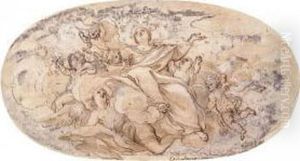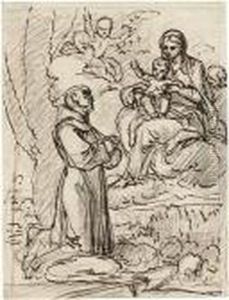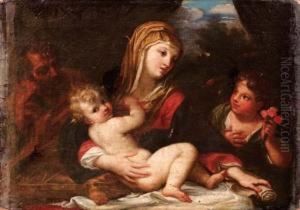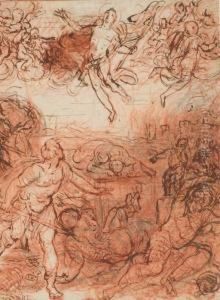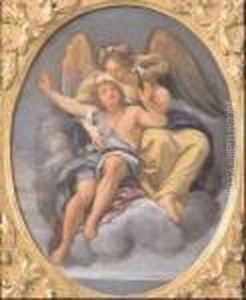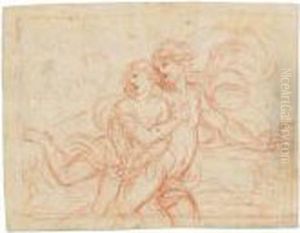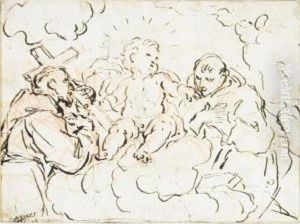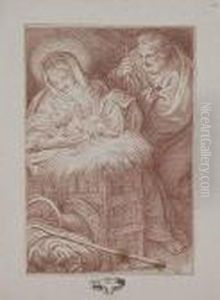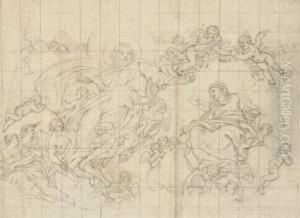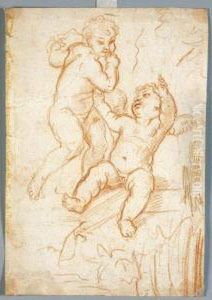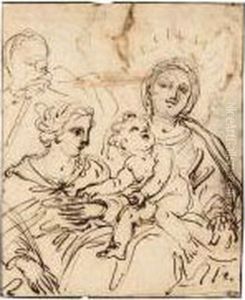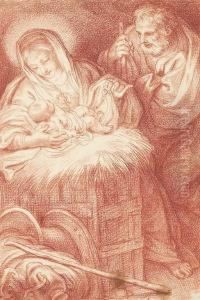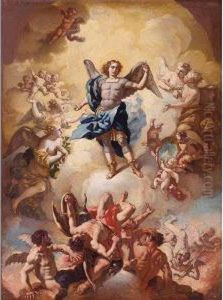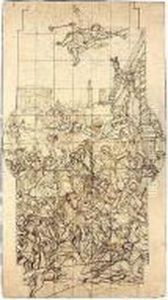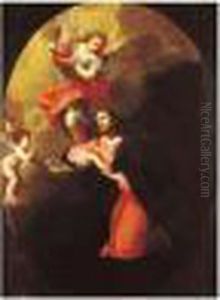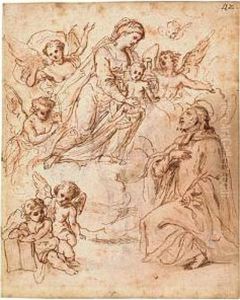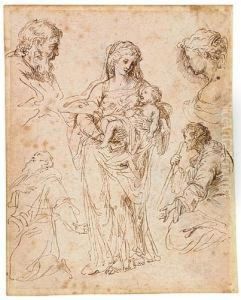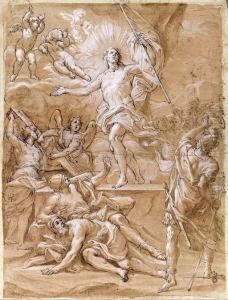Giacinto Calandrucci Paintings
Giacinto Calandrucci was an Italian painter of the Baroque period, born in 1646 in Palermo, Sicily. He was part of the vibrant artistic scene in Italy during the 17th century, which was characterized by dramatic expression and grandeur. Calandrucci received his initial training from his uncle, Giacinto Gemignani, who was also a painter. He moved to Rome, which was the epicenter of Baroque art, to further his studies and artistic development.
In Rome, Calandrucci became a pupil of the well-known artist Carlo Maratta, who was a leading figure of the Roman Baroque movement. Under Maratta's guidance, Calandrucci developed a style that combined the clarity and classical simplicity favored by his master with his own sense of color and composition. He was particularly noted for his fresco and altar-piece works, which were imbued with a sense of movement and dramatic intensity characteristic of the Baroque style.
Calandrucci's work was well-received, and he was commissioned to produce numerous works for churches and other institutions throughout Italy. Some of his notable projects include the frescoes in the church of San Silvestro al Quirinale in Rome and the altarpiece in the Basilica di Santa Maria Maggiore. His paintings often featured religious themes, executed with a deep understanding of human emotion and divine inspiration.
Despite his success, Calandrucci is not as well-remembered as some of his contemporaries. This could be due to the overshadowing influence of other prominent artists of the time, such as Gian Lorenzo Bernini and Pietro da Cortona, who defined the Baroque style in a more dominant manner. Nevertheless, Calandrucci's contributions to Italian Baroque art remain significant, and his works continue to be appreciated for their beauty and emotional depth.
Giacinto Calandrucci passed away in 1707. His legacy lives on through his paintings, many of which still adorn the walls of Italian churches and galleries, standing as a testament to the enduring appeal of the Baroque style and the skill of its practitioners.
